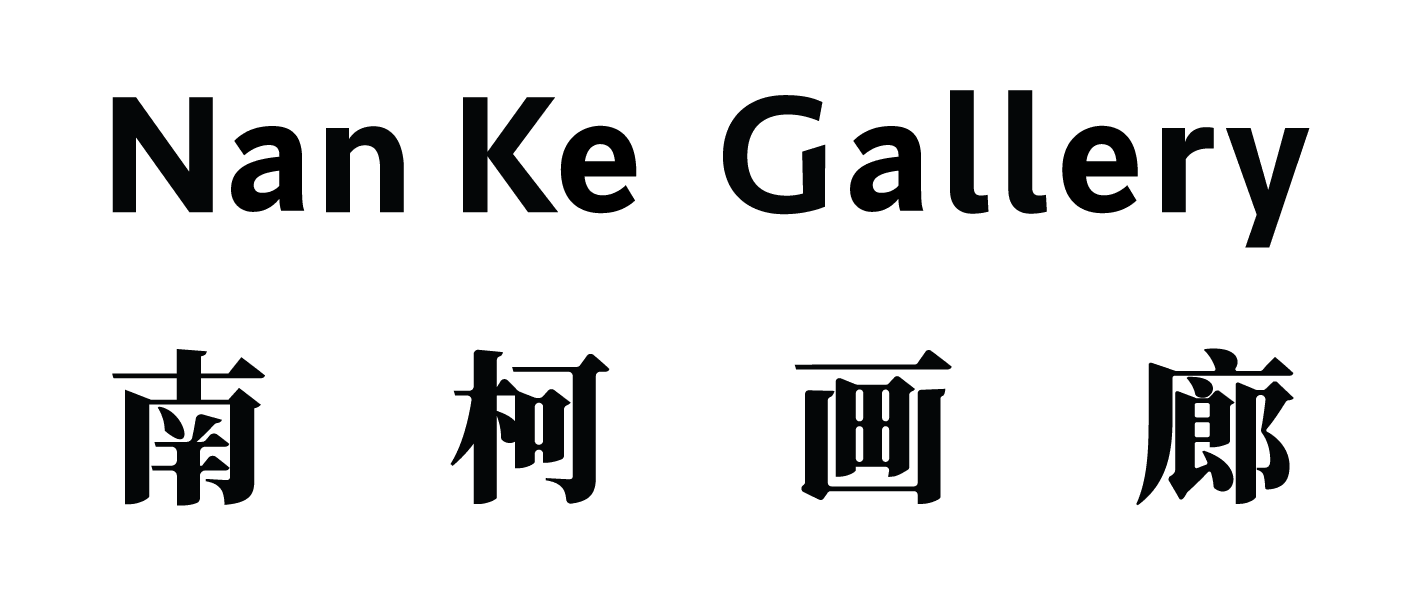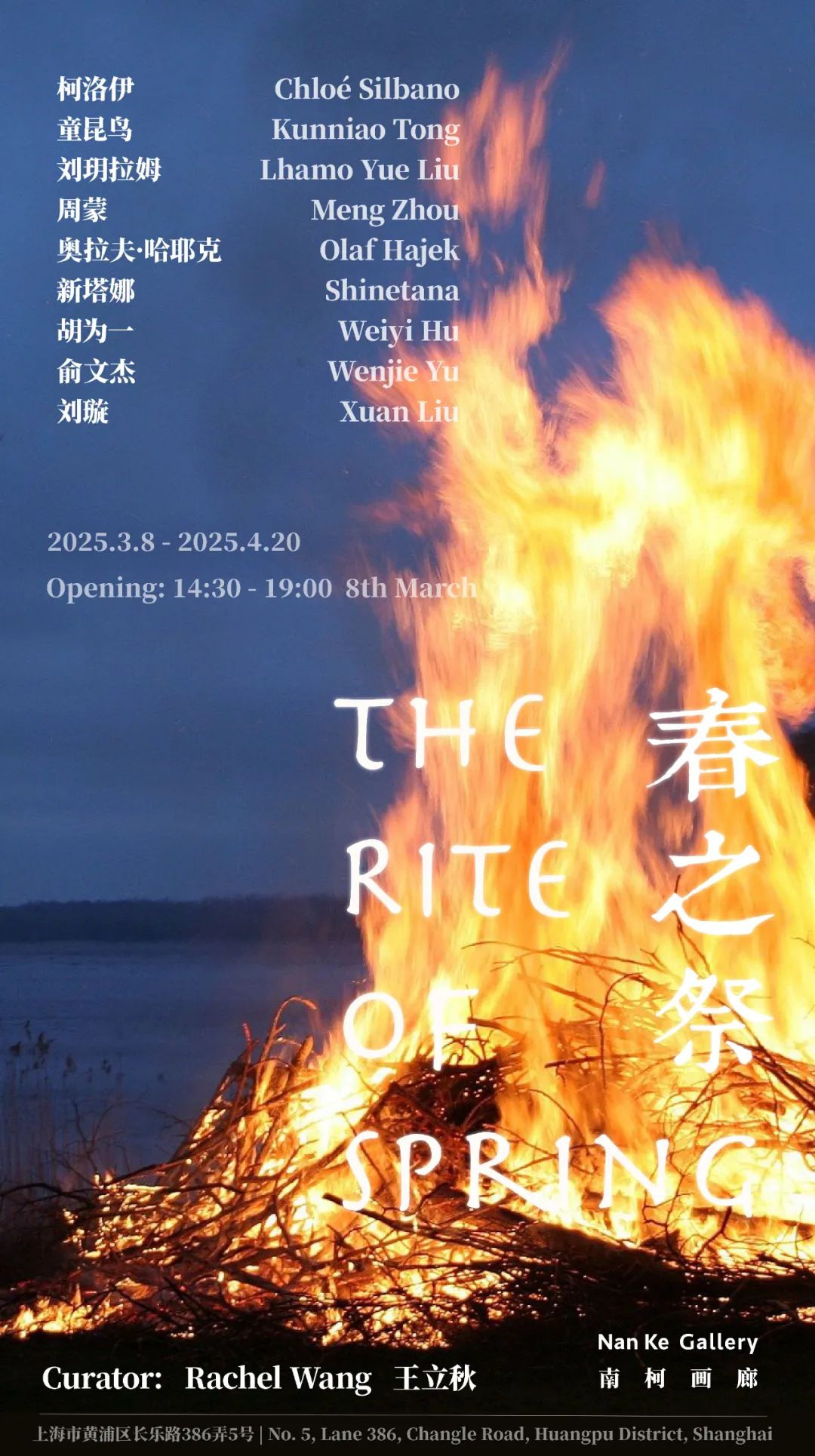
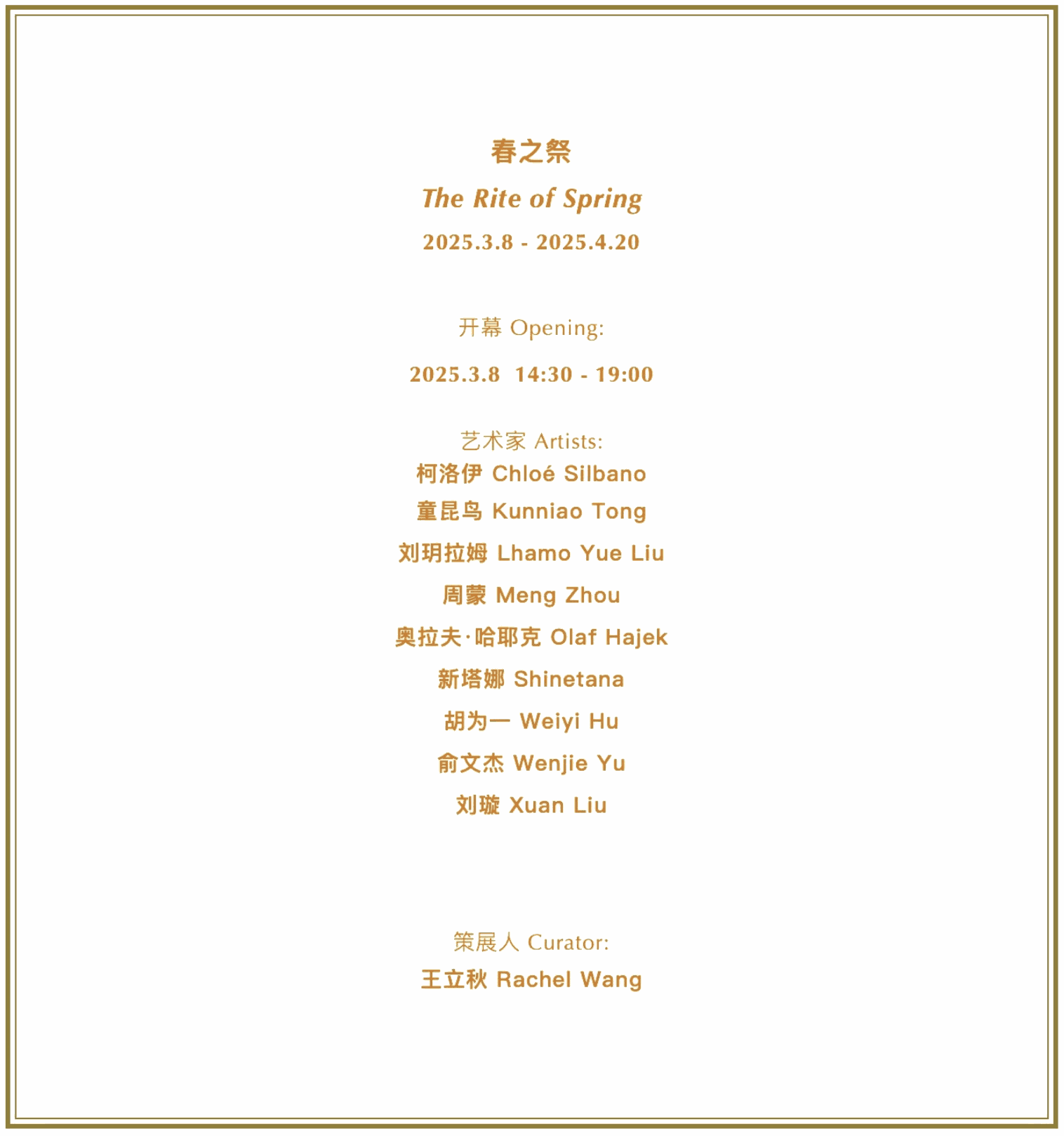
Through the cross-media practice of nine artists, Nan Ke Gallery's current group exhibition project “The Rite of Spring” traces back the untamed spirituality of primitive beliefs, and tries to rectify the contemporary semantics of “sacrifice” - from “appropriation” to “mutual subjectivity”, from consumption of the “primitive” to a prayer for equal coexistence. It also attempts to correct the contemporary semantics of “sacrifice” from “appropriation” to “mutual subjectivity”, and from the consumption of the “primitive” to the wish for equal symbiosis.
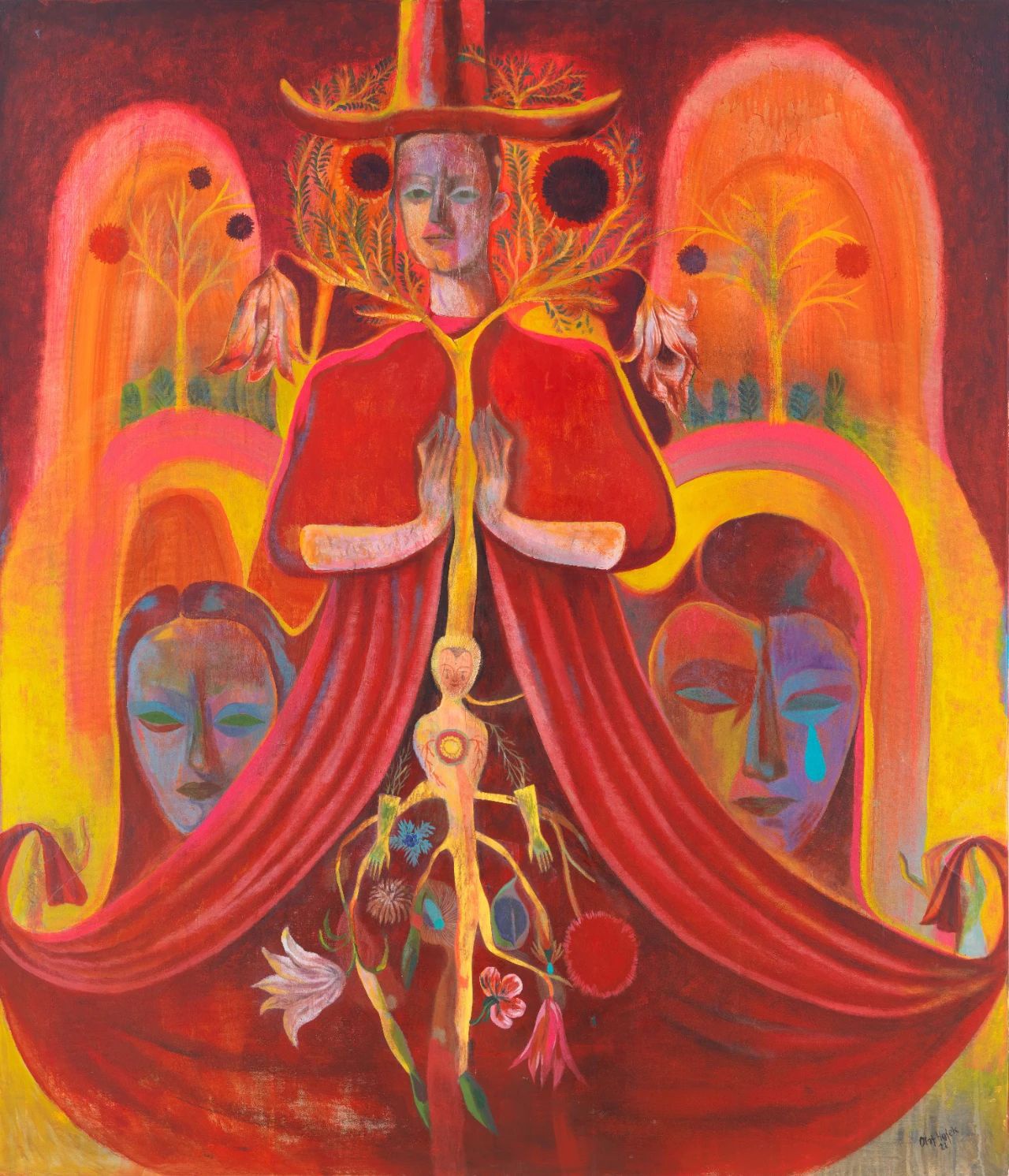
Olaf Hajek
Zauberber, 2023
Acrylic on canvas
140h x 120w cm
© Courtesy of the artist
In the creation myths of the North American aborigines, the gods created mountains and rivers through physical movements, and the body became the origin of natural landscapes. Olaf Hajek's works incorporate folkloric elements into gorgeous visual narratives and is obsessed with deconstructing the boundaries between nature and human beings. In his images, the human body is transformed into plant roots, animal bones are symbiotically grafted with mechanical parts, and human and non-human beings share the same embodied matrix.
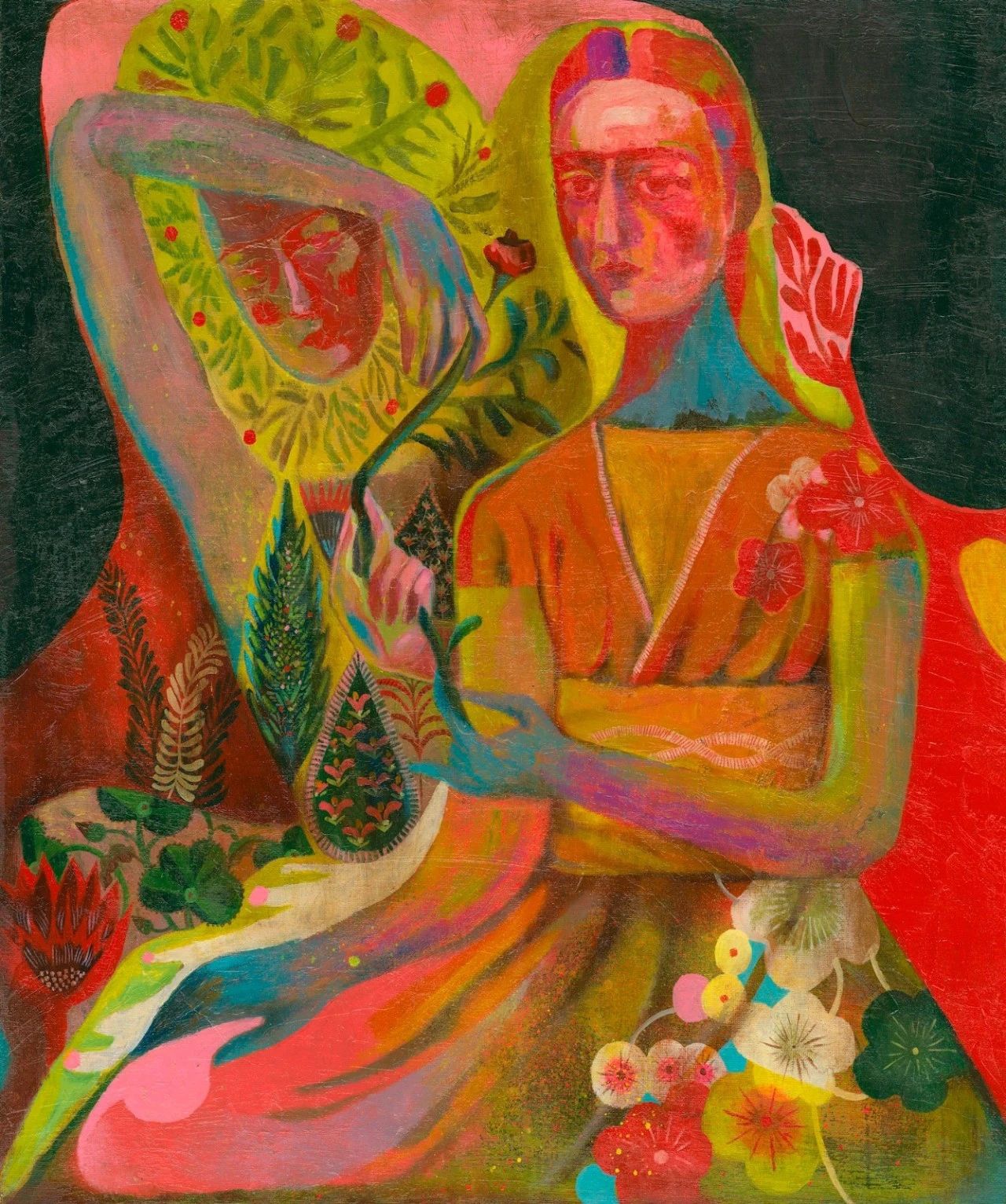
Olaf Hajek
Der Flüsterer, 2023
Mixed media painting
55h x 46w cm
© Courtesy of the artist
Olaf Hajek was born in Rendsburg, Germany. After he finished his degree in graphic design at the University of Applied Sciences in Düsseldorf, he moved to Amsterdam and began to work as a freelance artist. Olaf primarily lives and works in Berlin, but travels frequently and is represented by an agency on nearly every continent. He has had solo exhibitions in Hamburg, Munich, Berlin, Atlanta and Cape Town.

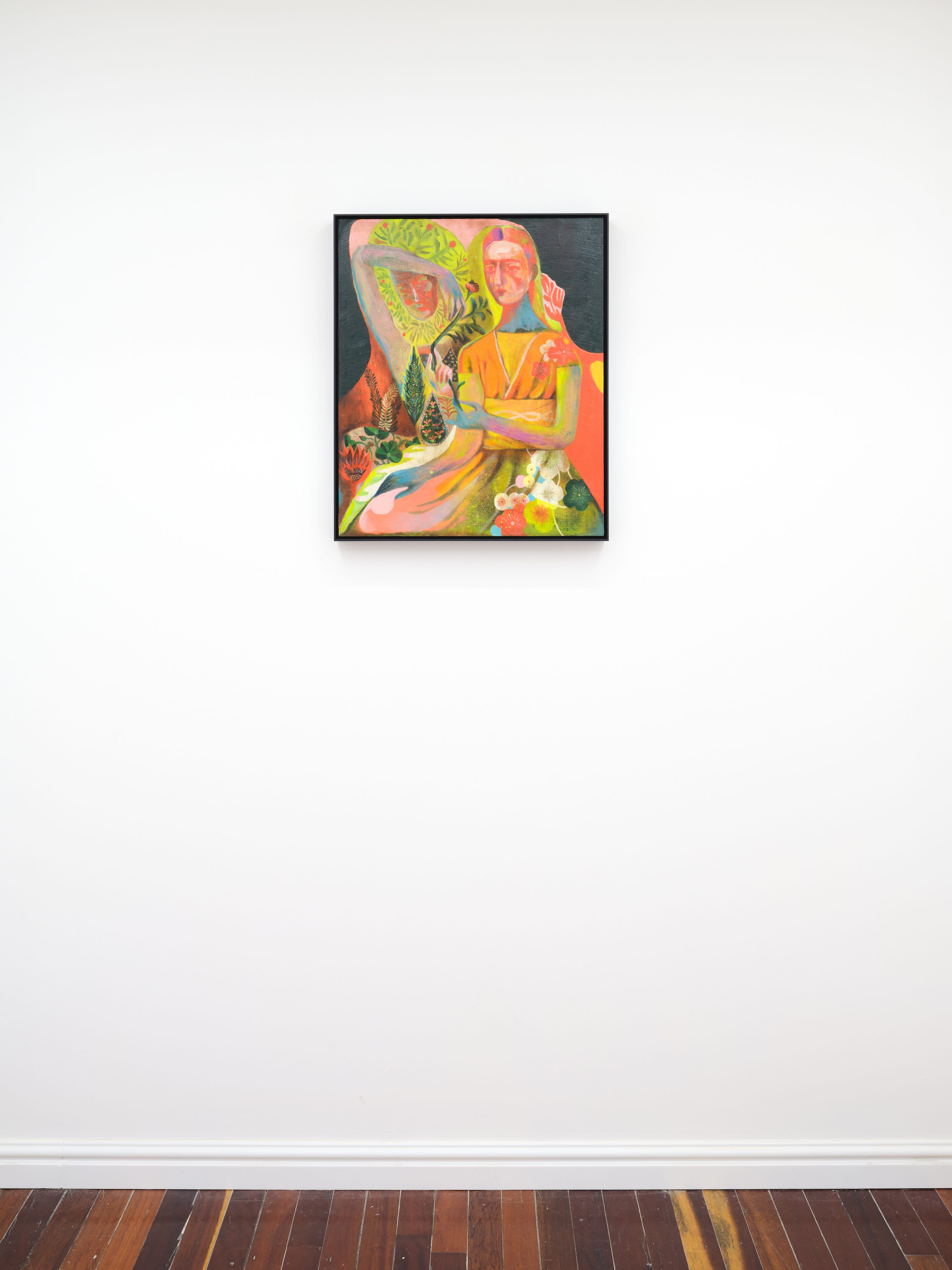
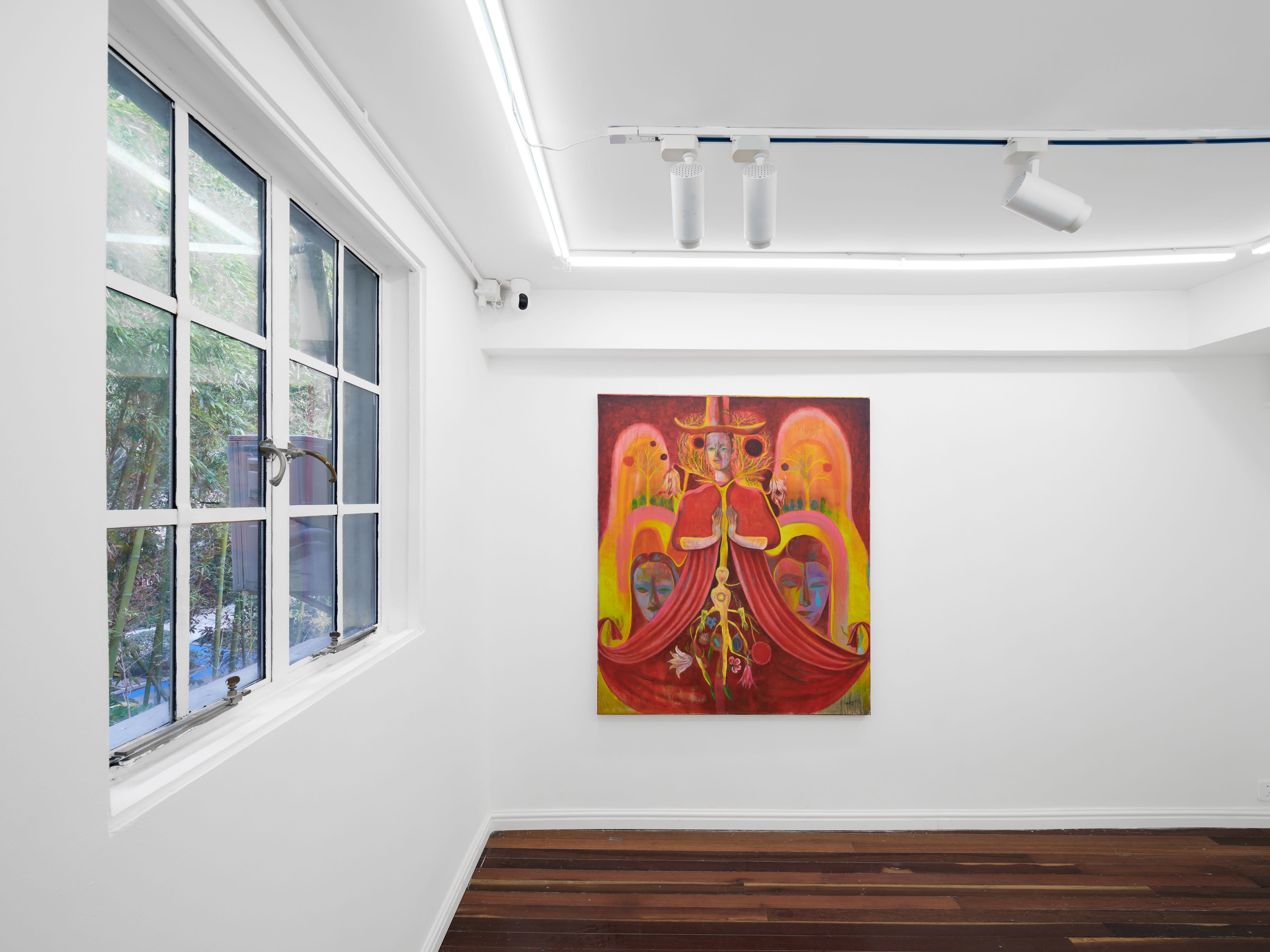
Installation view of The Rite of Spring, March 8, 2025 - April 20, 2025, Nan Ke Gallery, Shanghai © Courtesy of Nan Ke Gallery, Photographed by Runxin.
A technically perfect painter, he creates enchanting visual patterns, scenes and creative characters in which nature and artifice are intertwined. Olaf collects mental images everywhere he goes: on his travels, in magazines, or on the internet.African traditions, Indian temple art, South American folklore, and pop culture are all expressed in new ways in his almost surreal tableaux.He uses motifs of flora and fauna, archaic symbols and current themes, working them all into his pieces in great detail and virbant colour.
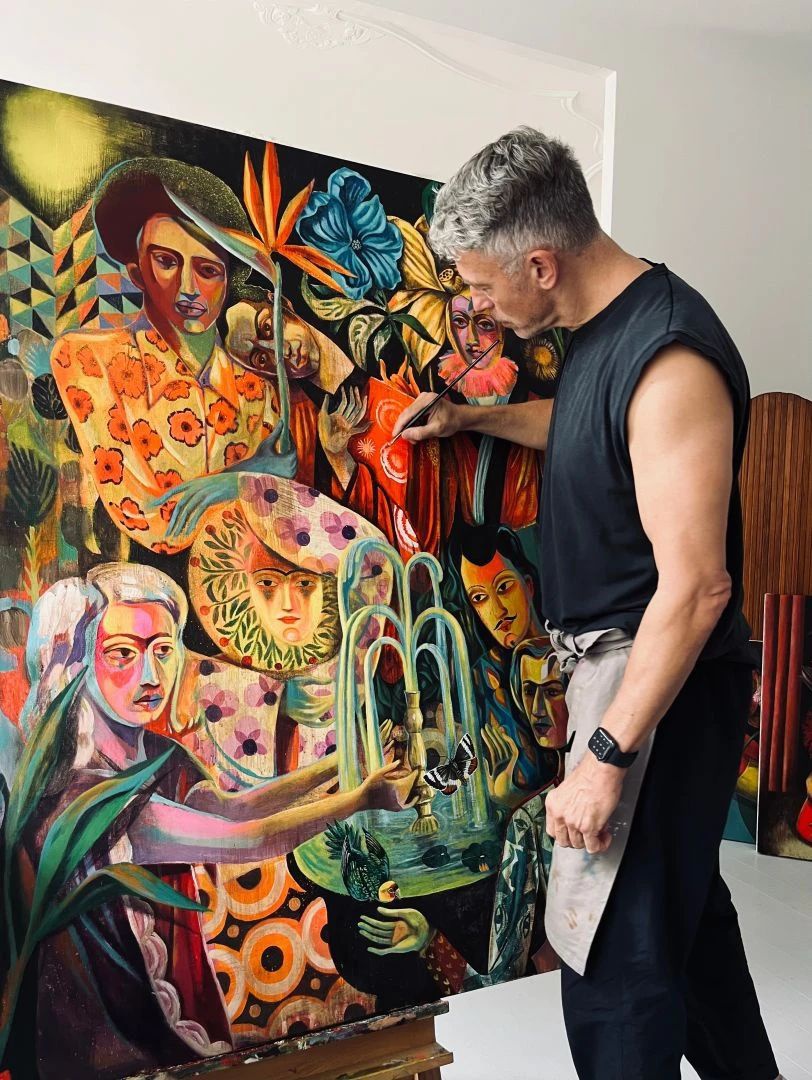
Olaf Hajek in the studio © Courtesy of the artist Photo by shoutout miami
The range of influences people see in the work of Olaf Hajek is staggeringly wide. Giuseppe Arcimboldo, Frida Kahlo and so on across the ages. In part, it’s because he’s so versatile—surreal, primitive and precise all at once. But Hajek doesn’t paint in terms of references. He paints in remembered collages—drawn from pretty much everything he’s ever seen.
His body of work teems with figures whose faces, beards or bouffant hairdos are comprised of organic matter: lyrical clusters of flowers, rivers, birds and fruits. You are probably right to detect a whiff of Arcimboldo’s sixteenth-century “composite heads” here, but it’s just a whiff. In these works, Hajek is expressing his own, very modern vision—the idea of the universe within, the “secret garden” of our internal lives.
March 28, 2025
